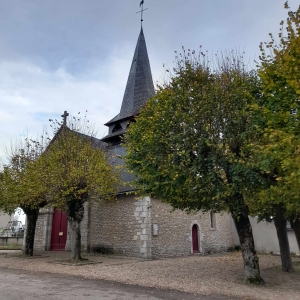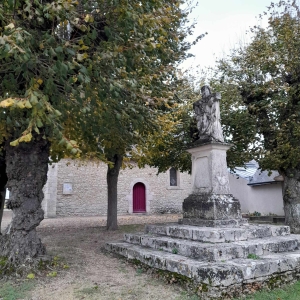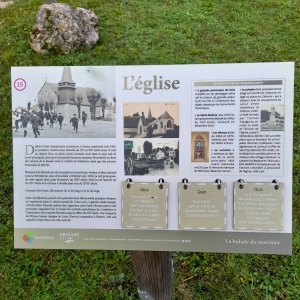When can we talk about contested heritage?
Heritage represents our social and cultural identities and as such carries those identities forward; it is, in an archaeological and anthropological sense, a timeline of a people within a space. As such, it doesn’t just represent the culture in question, but also how that culture relates, in good and bad, to others, and how others relate to it.
Conflict, either intercultural or intracultural (where groups belonging to the same culture are at odds with each other), extensive, armed or otherwise, influences not only how people are treated and how their rights are respected, but also how their respective culture or group is viewed and represented. This means that the heritage of this culture or group can become contested as a concept in its tangible and intangible form in many ways and for a lot of reasons… which can have devastating consequences for people themselves as well as material culture and behaviours connected to them.
Perhaps the most extensive and successful way to Other someone is to devalue their culture, or claim it does not exist or does not exist in a specific space. This isn’t new – examples of destroying culture are found throughout human history, possibly more often than we even realise, because we may lack significant information about human groups and their existence within a given space. What is new, however, is the technological achievements that can enable us both to restore or at the very least visually represent, in form of a technological cultural memorial of sorts, lost material culture, as well as, on the other side, the impact destructive behaviour can have on that material culture. Explosives and fire have been used in the past to destroy cultural heritage, as has heavy machinery; now, with the advent of drones, it is likely that we will see them used against material culture too.
When heritage is contested, it is presented as either belonging to someone else and not the group it belongs to, not truly important, not really culture, non-existent in general or in specific space and/or time, inferior to another culture, dangerous in some way to others even when this culture (including culture of subcultural groups) does not de facto threaten anyone (e.g. through own attempts at violating human rights or cultural annihilation). This is important to remember especially when discussing minority groups and their rights, but also their historic presence. The threat, often, is to the narrative of a group; where a rigid story of who a group is and why they have the right to a specific space, or why they have the right to subject others to any form of discrimination, is present, there tends to exist the motive to minimise or even erase all information that could call this narrative into question. Apart from various violations of human rights we see associated with such conflicts, whether or not they are armed, contesting historic values of an Othered group’s heritage, retelling its story in a different manner, presenting it as problematic or underserving or non-existent, or destroying or refusing to allow it to be preserved (which is ultimately the same thing) are all tools with which Othered heritage is reimagined, contested and ultimately erased. And once heritage is lost, it is hard to re-establish, especially in cases where much time has passed.
Let’s look at some examples. During the Huguenot uprisings in France, as well as during many wars and the Revolution itself, much of the cultural heritage was damaged. Locally to the author, three notable examples exist… Notre Dame de Orleans, a large cathedral, and a smaller, humbler church of Saint-Symphorien in Combleux and the castle of Chateau de Lille. Both churches suffered considerable damage : the cathedral was almost completely destroyed, and Saint-Symphorien was not only damaged, but also, for a time, under state control in the Revolutionary era…control that would not have considered its importance as tangible, and even less as intangible heritage monument. The castle, meanwhile, was completely destroyed. The impact must have been severe on the practicing Catholic communities of the era, but it was not lasting – both got rebuilt in the following decades. From the perspective of the communities, a part of their culture was restored; from a very strict archaeological and anthropological perspective, however, we are forgetting that, quite likely, precious parts of these buildings would have still been lost and something new would probably have taken their place. The heritage was therefore restored only partly… and we may not even know what it is that we have lost.
Our second example is Native American culture. The first thing to consider is that the Native culture should not be referred to as a single overarching concept – there are untold versions and forms of it that may differ from group to group, tribe to tribe… and are almost constantly represented as a single entity, regardless of the facts. Native American culture has been contested and remains marginalised in many ways for a long time, and has only recently gained more interest which may help attempts to safeguard it. But as it is often presented as a whole, the different group cultures and their equally different needs are unlikely to be met if this thinking persists. Some groups have struggled more than others – some may have more members who still speak the language and practice intangible cultural heritage, or are in any way connected to tangible cultural heritage such as human-made objects.
Our final example is on sexual minorities. While sexual minorities generally share the overall culture around them, or at least that of a different minority culture if they have mixed minority status, they are often still a part of a very specific culture – be it because they are given that status within their own culture or cultures, such as the hijra of the Indian subcontinent, or indeed due to unacceptance within their culture, such as we see in much of the Western culture. In both cases, because of the perceptions of Western religious beliefs and associated cultural practices, we have seen the early LGBT+ community heritage suppressed and even erased in many places. Indeed, because so much of it had to be secretive, it remains contested, including academically, even today.
The less remains of someone’s heritage, the easier they are to erase. That’s a human rights matter – and heritage is inevitably connected to human rights -; but from a strictly anthropological, archaeological and historic perspective, the harm is global. We can learn so much from heritage, and even today, we are seeing it erased before our eyes, contested as unimportant and unreal, or utterly denied. It is of vital importance that we are aware of the behaviours involved in contesting heritage, and of the impact especially destructive technology can have to speed its annihilation to prevent it… but it is equally important to understand that those same technological advances can help us safeguard it better, and to perhaps restore at least in part that which was lost.
Helidth Ravenholm leads her own applied anthropology consultancy (Culture Contact – Ravenholm Consultations). For the past decade, she has split her time between consulting for various clients, focusing on the impact of social and cultural behaviour, and research on topics such as minorities, human-animal relations, impact of technology and interactions with archaeological and historic material culture. She currently lives in France and consults predominantly online.
Saint-Symphorien in Combleux
Photo courtesy of C. Reid, 2023
Part of Saint-Symphorien church complex
Photo couresy of C. Reid, 2023
Interactive information board at the church utilises simple uncoverable spaces to help teach its history. Photo courtesy of C. Reid, 2023






